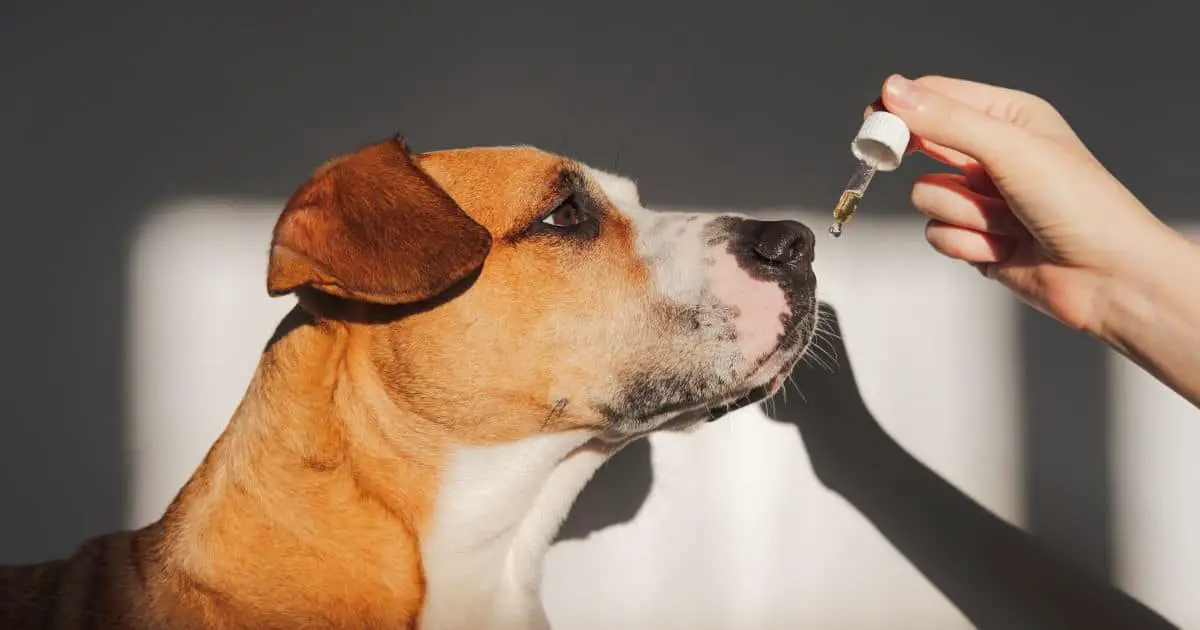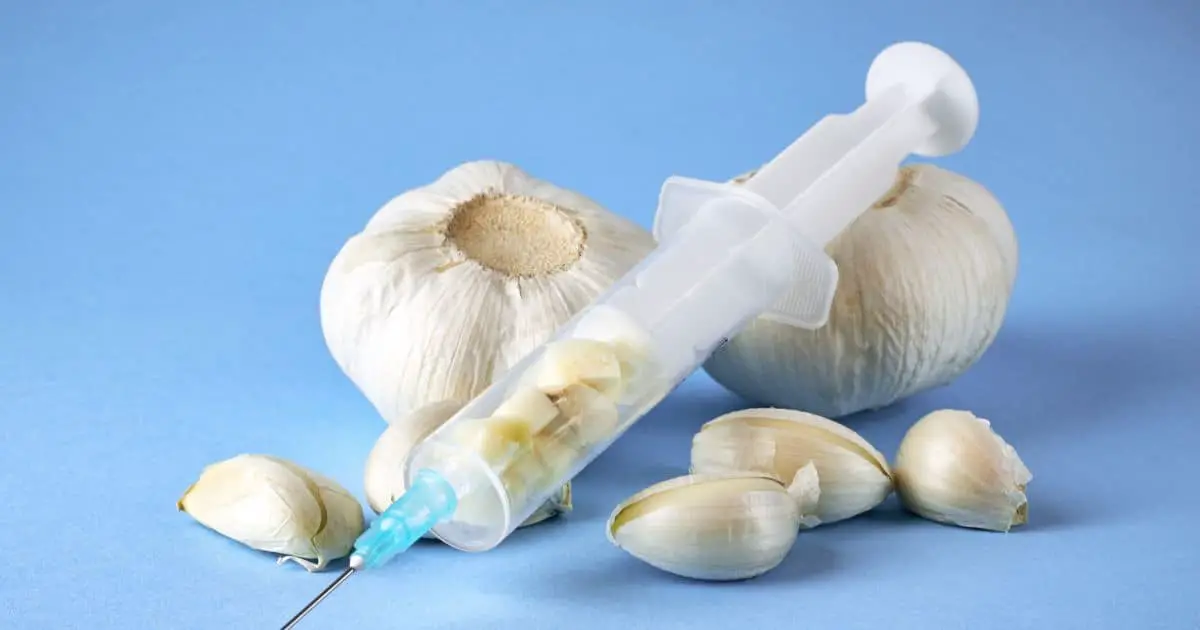Is your pet struggling with their health, but you want to avoid prescription medication? Natural antibiotics for dogs might just be the solution you’ve been looking for. But what exactly are these products, and are they truly effective? In this guide, we take a closer look at these conventional treatments and discuss what they can do for your pet.
What Are Natural Antibiotics for Dogs?
Natural antibiotics for pets are also referred to as conventional antibiotics and are usually made from various organic ingredients like oils, herbs, plant extracts, and foods that have antibacterial properties.
These products do not offer the same efficiency as prescription antibiotics but can be used to promote healing in pets who struggle with minor issues. They can also be helpful for boosting your dog’s immune system.
There are many different types of natural antibiotics. Some of these can be found in your kitchen spice rack, while others are available at online stores, pharmacies, and veterinaries. Some of these antibiotics are specifically developed for pets, while others might only be suitable for human consumption. Some of these conventional products are even suitable for both humans and pets because they are designed to attack bacterial cells and not human or pet cells.
Natural antibiotics come in different forms, and some are just as powerful as pharmaceutical antibiotics. These products can be consumed orally for internal healing properties, or they can be applied externally to treat other types of infections like skin infections, nail infections, and ear infections.
What Can Natural Antibiotics Do for Dogs?

Antibiotics are helpful for treating certain types of bacterial infections in dogs and humans.
As with humans, your dog’s immune system usually fights off and kills infections before the infection spreads and symptoms start. If the bacterial infection grows too fast, or if your dog’s immune system is compromised, then their body might be unable to fight off the infection.
This is where antibiotics come in. These products assist the body and kill bacteria or prevent the bacteria from multiplying and spreading. By weakening the bacteria, your dog’s body can effectively fight off the infection.
Most antibiotics cannot be used to treat a viral infection but are helpful for killing a secondary infection. Some natural antibiotics can however be used for certain viral infections because they have antiviral or antifungal properties.
Reasons to Consider Alternatives to Prescription Antibiotics
Prescription antibiotics can be very beneficial for your dog, especially if your pet is struggling with a life-threatening condition.
However, over-using prescription antibiotics isn’t a good idea at all. There are several reasons for this.
Damages Intestinal Flora
Antibiotics can cause harm to beneficial bacteria or intestinal flora. In some cases, these bacteria can be destroyed forever and are irreplaceable, even if you take probiotics.
The long-term effects can be very serious. If beneficial bacteria are damaged forever, pets can become much more vulnerable to infections and diseases.
Reduces Nutrient Absorption
When the internal flora of the gut are damaged, it can impact your dog’s ability to absorb nutrients from food. This is because many of these microscopic organisms play an important part in digesting food and allowing your dog’s body to absorb nutrients.
Pets Can Become Resistant
Antibiotic resistance occurs when bacteria stop responding to antibiotics. When this happens, humans and animals no longer benefit from antibiotics and these products can no longer assist in fighting off infections.
When to Use Natural Antibiotics for Animals
Just like with any other pharmaceutical antibiotic, it isn’t the best idea to overuse a natural antibiotic. If these products are over-used, their efficiency can be reduced and you could start to develop adverse side effects. Here is a quick look at when to use natural antibiotics.
When Your Pet Needs It
It is important to only use antibiotics if your pet actually needs these products. If you keep offering natural antibiotics throughout the year, your pet can become resistant to the effects these products have. It is best to only introduce natural antibiotics when your pet is ill.
When Your Pet Suffers From Certain Types of Infections
Antibiotics are not effective for viral infections like sinus infections and certain ear infections, but they are great for treating new bacterial infections like urinary tract infections, coughs, and other illnesses.
When Your Dog’s Immunity Is Compromised
If your dog keeps getting sick and struggles with recurring infections, it usually means that he or she has a compromised immune system. It is advisable to use natural antibiotics whenever your dog gets sick so your pet can fight off a secondary infection that might be in its starting phase and is sure to surface in the near future.
With this in mind, you should also remember that natural antibiotics don’t have the same negative side effects as pharmaceutical antibiotics. These products can be offered more frequently than prescribed antibiotics and can be used to treat lesser illnesses your dog might be dealing with like a skin rash.
The Most Effective Natural Antibiotics for Dogs

Many different products and food items have antibacterial benefits, but not all products that can benefit humans are suitable for pets. Here is a quick look at the best natural antibiotics that are safe to use for treating a pet.
Oregano Oil: Nature’s Strongest Natural Antibiotic
It is believed that Oregano oil is the most potent natural antibiotic that is safe for dogs to use. This essential oil is helpful for inhibiting microbial growth. Oregano oil can be taken internally or externally.
How to Use Oregano Oil for Dogs
Mix one drop of oregano oil with a teaspoon of coconut oil to treat infections on the skin or on open wounds to promote healing.
Dogs can also receive 2-3 drops of the oil orally three times a day (depending on your dog’s size) to fight off a bacterial infection.
Colloidal Silver: Best Penicillin Alternative
Colloidal Silver is a mineral that is safe for your pet to consume and has good antibacterial properties as well as anti-fungal properties. It is believed that this mineral can even be helpful for viral infections, andthis product can also be used to eliminate impurities in water.
This is a good product to treat infections that are not too severe. One of the main reasons so many love Colloidal Silver is that it doesn’t harm good bacteria in your pet’s gut. Instead, this product only kills pathogens without lipid coating.
This natural product can be used for skin conditions, eye infections, ear infections, yeast infections, skin allergies, small injuries, or for combating internal infections such as respiratory infections.
How to Use Collodial Silver for Dogs
Colloidal silver can be taken orally, used externally as a topical treatment, or inhaled. Consuming this product can be useful for fighting a bacterial infection, while the topical application can help treat a fungal infection.
To use orally, you can simply drop the product into your dog’s mouth three times a day for ten days. The product tastes a lot like drinking water, and most dogs don’t have an issue taking it. The dosage should depend on your dog’s size.
For topical application, you can add the product to a compress and press it to the affected area a couple of times a day.
Dogs with lung conditions like asthma, bronchitis, or pneumonia can also inhale the product. Pour the Collodial silver into a nebulizer and allow your dog to inhale the mist for 15 minutes.
Coconut Oil
Coconut oil is another natural antibiotic that you can find at just about any grocery store. This type of oil offers numerous health benefits and has great antibiotic properties that are ideal for improving skin conditions, treating wounds, and healing infections. It can even be used to overcome digestive problems caused by bad bacteria.
How to Use Coconut Oil for Dogs
You can offer this antibiotic to your dog by mixing it with dog food in your pet’s bowl.
You can also use coconut oil as a topical antibiotic and massage it onto the affected areas of your dog’s skin. As a topical treatment, coconut oil can be mixed with other ingredients or used as pure oil. This is a great treatment for dry skin, dry spots, or even rashes.
Honey
Honey has been used as a medical remedy for hundreds of years. This natural product is a superfood that can help treat sore throats, sore teeth, wounds, and even inflammation on the skin. Many also believe that the antiseptic and anti-inflammatory effects of honey make it ideal for treating stomach problems, asthma, and allergies in dogs.
How to Use Honey for Dogs
Most dogs are also happy to consume honey without any fuss because it has a sweet taste. But you should be careful not to give your dog too much since this fructose sugar can be unhealthy if your pet has a diabetic disorder. It is very easy to offer honey orally because you can simply spread a thin layer over your dog’s favorite snack.
Honey can also be used to bandage wounds to promote healing. If you are using honey for wounds, you should be careful to bandage it properly or your pet might start to lick the wound.
Olive Leaf Extract
Olive leaf extract is often used in antibiotics for pets because of its antioxidant properties. This unique oil has antiviral, antifungal, antibacterial, and even antimicrobial properties. This essentially means you can use it as an antibiotic to treat just about any condition including certain viral infections. Olive leaf oil extract can be a good healing aid for many different conditions like the common cold, inflammation, skin conditions like rashes, high blood pressure, and many others.
How to Use Olive Leaf Extract for Dogs
This healthy extract can be offered to your pet orally. The product is available in capsules and liquid extract form and can be offered with or without food. If your dog feels nauseated after offering it on empty stomach, then you should try mixing it in with food.
For topical use, you can add a few drops of this product to a cotton ball and place it on the affected area a few times a day.
Turmeric
Turmeric is used by many humans for its healing abilities. But did you know that this natural antibiotic can be safely offered to your pet? This spice has antibiotic properties and can be used to boost your pet’s immune system. Its immune-boosting properties make it ideal for treating pets who struggle with recurring infections. Turmeric can also improve your pet’s gastrointestinal system so they can absorb more nutrients from food. Lots of people also use turmeric to treat arthritis pain in older dogs.
This natural ingredient can also be used to treat skin conditions like itchy skin or rashes.
How to Use Turmeric for Dogs
To use turmeric as a topical treatment, simply mix it with aloe vera and apply it to the affected area after giving your dog a bath.
Turmeric powder can also be mixed with olive oil or coconut oil to create a paste that can then be mixed into wet dog food.
Garlic

Garlic isn’t one of the best natural options because it can cause bad breath. However, it can be a good natural antibiotic for pets who might be struggling with harmful bacteria. Garlic is often sold as a supplement in pet stores because it is also helpful for keeping ticks and fleas at bay and away from pet beds. This can be helpful for preventing Lyme disease.
How to Use Garlic for Dogs
As with most medications, you shouldn’t offer your dog too much garlic. It is best to keep your dog’s weight in mind when you are offering garlic. Here is a quick look at the appropriate dosages based on average pet weights:
5-pound dog: 1/6 teaspoon crushed garlic
10-pound dog: 1/3 teaspoon crushed garlic
15-pound dog: 1/2 teaspoon crushed garlic
20-pound dog: 2/3 teaspoon crushed garlic
25-pound dog: 1 teaspoon crushed garlic
It is usually best to start with a small dose of garlic and increase the amount you offer over a week or two. Since garlic isn’t the tastiest food, it is also best to mix the crushed garlic with wet dog food before offering it to your pet.
Essential Oils
Essential oils can also be a good alternative nature antibiotic. These oils are harvested from plants and have numerous health benefits and applications.
When researchers started testing the antibacterial effects of essential oils, they discovered that 23 out of the 34 essential oils researched were more effective as an antibiotic than Doxycycline for treating Lyme disease.
Bandit, oregano, clove bud, geranium, bourbon, and cinnamon bark are the five most effective essential oils to use for pets that suffer from Lyme disease.
It is, however, important to note that not all essential oils are good for dogs. Anise, camphor, clove, thyme, wintergreen, birch, juniper, mustard, pennyroyal, rue, wormwood, and tea tree oil can be harmful or even toxic to dogs.
How to Use Essential Oils for Dogs
There are quite a few different ways to use essential oils for your dog.
As a topical treatment, you can dilute the essential oils and add them directly onto the skin using a cotton swob. This is ideal for treating skin irritations, surface wounds, or fungal infections.
Essential oils can also be diffused to relax a nervous dog. Simply add a few drops of oil to a diffuser and allow it to run for 30-40 minutes so your dog can inhale the oils. Essential oils can be used for a maximum of 5-7 consecutive days.
You can also mix certain essential oils in your canine shampoo or conditioner to treat or soothe skin conditions or promote hair growth and health.
Plantain
Plantain is a plant that is often condemned and considered a weed. However, this plant has many antibacterial and anti-inflammatory properties.
Plantain weeds contain one valuable phytochemical called allantoin. Allantoin is helpful for killing germs, speeding up healing, and boosting skin growth.
This natural antibiotic is extremely helpful for treating skin irritations. You can make your own topical antibiotic by combining plantain with calendula and aloe vera. Rub this mixture onto rashes, bites, and sores on your dog’s skin, and the wounds will heal very quickly.
How to Use Plantain for Dogs
Many people also use Plantain as an internal antibiotic. You can make your own Plantain syrup by juicing fresh plants in a juicer or blender, mixing them with water, and straining the liquid. Dogs can then be offered 1 teaspoon of this mixture per 20 pounds of body weight along with their daily meal.
For topical application, you can chop fresh leaves in a food processor and cover them with olive oil or grapeseed oil. Let the oil sit for a while and then apply it directly to affected areas on the skin.
Final Thoughts
Natural antibiotics for dogs can be a great way to boost your pet’s recovery, but it is very important to offer the right type of antibiotics at the right time. We hope that this guide has given you some helpful information on the best natural antibiotics to offer your beloved furry friend.
If you want to know more about other healthy foods to offer your dog or need other health advice, then you should have a look at some of the other guides we have on Can My Dog. With our guides, it becomes much easier to keep your beloved pet healthy and happy.
